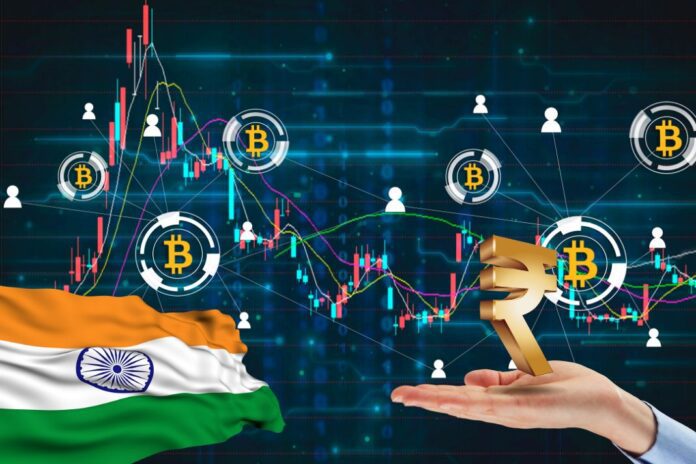How Do INR-Pegged Crypto Prices Reflect Global Market Trends?

Cryptocurrency is a global phenomenon, but it rarely feels that way at the point of trade. For Indian buyers and sellers, prices are filtered through a local lens—namely the Indian rupee. This becomes especially noticeable when there’s a spike in activity or volatility across global markets. Suddenly, traders in India see INR-based prices swinging in ways that don’t always match global headlines. That disconnect tells a deeper story.
This is particularly evident in P2P Bitcoin markets, as seen on sites like Binance, Forbes and Yahoo Finance for example, where buyers and sellers negotiate directly, often outside centralized exchanges. These peer-to-peer platforms serve as real-time reflections of both global crypto trends and local financial dynamics. And while the charts may track global movements, the pricing tells us a lot more about on-the-ground sentiment.
The INR Filter on Global Trends
While Bitcoin and other major cryptocurrencies are traded in USD terms on global exchanges, Indian users interact with them through rupees. That conversion process doesn’t just involve exchange rates—it includes fees, availability, taxes, and market restrictions. These variables create a price spread between what Bitcoin trades for globally and what it’s selling for locally in INR.
This spread becomes more pronounced during periods of global volatility. For instance, when Bitcoin surges in USD terms, local demand often rises in parallel. But if there are rupee liquidity issues, regulatory bottlenecks, or fiat-to-crypto onramp delays, Indian traders may see a bigger premium—or in some cases, a temporary price freeze entirely.
P2P Market Premiums As Sentiment Indicators
The P2P space has evolved into more than just an alternative trading channel—it’s become a window into real-time sentiment. When centralized exchanges struggle with INR banking channels, traders move to peer-to-peer markets. Prices on these platforms often carry a premium over centralized exchange rates, especially during global rallies or capital flow restrictions.
This premium doesn’t exist in a vacuum. It reflects local confidence, regulatory friction, and the urgency of access. When Bitcoin prices climb globally and P2P premiums in India follow suit, it suggests local buyers are eager to catch the wave—even if they’re paying more than the USD equivalent.
Similarly, when global markets cool off and P2P prices remain high in INR, it may signal that local demand is decoupled from international sentiment—perhaps driven by domestic economic uncertainty or currency concerns.
Arbitrage, Liquidity, And Market Timing
One of the key ways INR-pegged crypto prices reflect global trends is through crypto arbitrage opportunities. Traders who operate across multiple jurisdictions monitor price gaps between USD and INR markets. When global prices fall and local exchanges lag in updating INR pairs, arbitrageurs step in to balance the difference—at least temporarily.
But this balance is often short-lived. Because India lacks seamless banking support for crypto exchanges, liquidity can dry up quickly. During high-volatility moments, local markets may detach from international ones entirely, causing spreads that confuse new investors but speak volumes about infrastructure limits.
This is why platforms that allow fast, low-fee INR-to-stablecoin conversions often become hot spots during global news events. Traders rush to move funds, rebalance portfolios, or exit positions—further impacting local price action.
The Rupee’s Role in Price Sensitivity
Unlike dollar-pegged traders, Indian investors also contend with the rupee’s fluctuations against major currencies. When the INR weakens, imported inflation and dollar-denominated asset premiums increase. Bitcoin—often viewed as a digital commodity—starts to feel even more expensive.
This dual pressure (crypto volatility + currency volatility) makes INR-based pricing particularly sensitive. A 5% dip in Bitcoin combined with a 2% rupee slide can feel like a much larger loss on the ground. Conversely, when the rupee gains strength, crypto becomes slightly more accessible, leading to an uptick in local interest and potentially higher INR trade volume—even if global prices are stable.
This dynamic reinforces the idea that crypto trading in India is about more than just the coins. It’s also about timing the rupee and understanding how macroeconomic conditions bleed into asset pricing.
Regulatory Developments as Catalysts
Crypto pricing in INR doesn’t just reflect global movement—it often reacts even more strongly to local policy news. A new tax rule, exchange restriction, or court ruling can shift sentiment overnight. In these cases, even if global markets remain calm, INR-denominated prices may spike or dip sharply.
P2P markets in particular respond quickly to such changes. If there’s a rumored restriction on banking transfers, demand for stablecoins can surge locally, pushing up INR-based prices even if the global price stays flat. The market, in essence, prices in access risk, not just asset value.
As regulations continue to evolve, expect to see more of these temporary dislocations—especially in peer-driven markets where flexibility and responsiveness are higher.
Stablecoins: A Mirror And A Buffer
Stablecoins like USDT and USDC play a pivotal role in bridging global pricing with local accessibility. In India, many traders use stablecoins to hedge against rupee volatility and to track the dollar value of crypto assets without actually holding fiat USD.
The rate at which stablecoins trade in INR becomes another informal benchmark. When global demand for stablecoins rises, Indian markets often show an inflated INR peg—again, reflecting both currency strength and investor urgency. This pricing is often a clearer measure of capital sentiment than BTC itself, particularly during uncertain regulatory periods or banking freezes.
Final Thoughts
INR-pegged crypto prices, especially on P2P platforms, act as a reflection of both global market trends and uniquely Indian financial realities. They show how international narratives are filtered through local access, currency risk, regulatory friction, and user behavior.
For anyone tracking crypto in India—or trying to understand how it’s evolving—watching INR pricing offers insight beyond charts and candles. It reveals how a global market is interpreted, adapted, and acted on locally..
